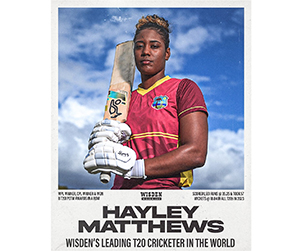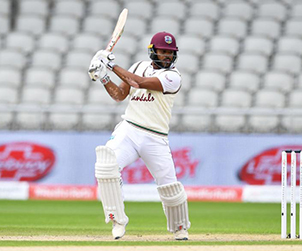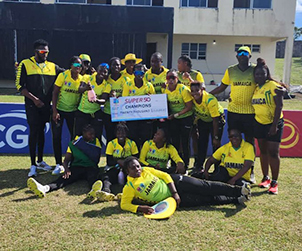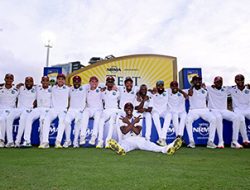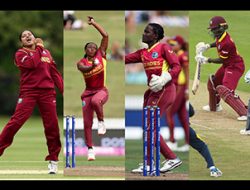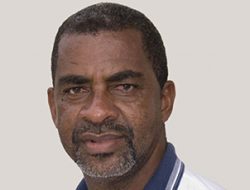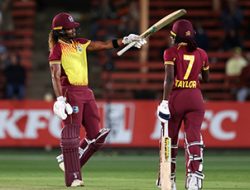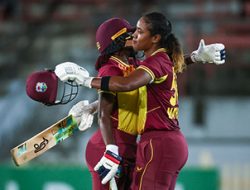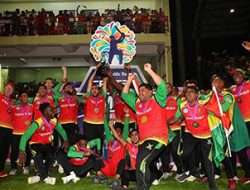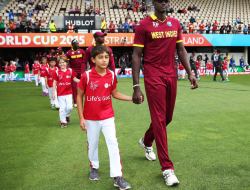There were some surprises in the tri-nation series in the Caribbean – the hosts beating South Africa twice, for instance – but the eventual outcome, of an Australian victory, was expected. There were some memorable performances like Imran Tahir’s seven-for, Sunil Narine’s six-for and Josh Hazlewood’s five-for, but there were no nail-biters. The run rates were reminiscent of the 1990s and there was only one score of over 300 in ten matches. Yet, despite all the things that the tournament was not, it still proved a good example of how this form of 50-over cricket can be enjoyed.
The concept of a three-team tournament is not new and, in an age in which teams are judged on major competitions, it may even be outdated, but this series showed how the humble triangular can still be relevant. It was cleverly organised in three locations and each leg contained its own story. Although the event lacked context in a wider cricketing perspective, it managed to create its own as it progressed.
Importantly, the hosts started and, almost, finished well. That is the secret to any multi-team competition – the home team has to do well to sustain interest. Importantly for global cricket, in this instance it was West Indies, around whom fears of a decline into total obscurity continue to swirl.
They were expected to come crashing down after the highs of their World T20 success, if only because they were without some of their stars. Chris Gayle, Darren Sammy, Dwayne Bravo and Andre Russell were all otherwise occupied at the NatWest t20 Blast after not being selected for the national side because they did not play in the domestic List A competition. The merits of that policy aside, it robbed West Indies of some its biggest names, a liability in any situation and more so when taking on two of the world’s top three ODI sides.
The return of Narine and Kieron Pollard did wonders for them and the pair combined to take the opening match from under South Africa’s feet. Narine’s new action – which he said is 80% changed from his previous one – and Pollard’s big-match temperament proved too much for a South African side that had not played together since the World T20 in March.
That match set a rollercoaster in motion: West Indies lost their next game to Australia, who were in turn beaten by a smarting South Africa to ensure the Guyana leg ended all square. It was the section of the tournament most would have wanted to forget because the surfaces were slow and run-scoring was stifled, but it was also the most engaging. Narine showed that his confidence was not dented by the issues over his action, Australia eased Mitchell Starc back into the game after ankle surgery had kept him on the sidelines for almost six months, and South Africa fielded three specialist spinners to show off their depth in a department considered their weakest suit.
Things sped up in St Kitts, where the first score of over 250 and the first centuries were recorded. Australia got their own back over South Africa, whose long tail started to hurt them and did not stop until they were knocked out of the tournament. Perhaps the most remarkable result came when West Indies beat Australia in the fifth match. They successfully chased 266, thanks to their best opening stand of the series, a 74-run partnership between Johnson Charles and Andre Fletcher, and a fighting 92 from Marlon Samuels. All that seemed to count for nothing, however, when Tahir ripped through the hosts in the next match to help South Africa win by 139 runs, their only complete performance of the series.
A washed-out first match of the Barbados leg meant South Africa’s chances of qualifying for the final a game early were washed away. It also meant that both Australia and South Africa had to beat the hosts. Australia did, South Africa didn’t, and the final few predicted took place.
For West Indies, reaching the final was success enough, competing well in it even more so. Although they would have liked more success, they will be proud of their returns, especially because they found new heroes. Their opening pair remains a problem, but Darren Bravo and Samuels formed a sturdy middle. Pollard proved his commitment and Carlos Brathwaite backed him up well. Shannon Gabriel made a promising ODI debut but the most impressive performer was captain Jason Holder. He led the attack astutely, often putting himself in the line of fire against some of the most dangerous batsmen in cricket, maintained an economy rate of under six and fought a hamstring injury through the latter parts. Holder did not have the best returns – Narine topped the charts for West Indies with 12 wickets – but he did his bit.
This was not a series for quick bowlers but Hazlewood, Starc, and Kagiso Rabada stood out with aggression and pace that bodes well for their respective upcoming seasons.
It was also not a series for the batsmen. Only four centuries were scored, of which two came from West Indies batsmen. David Warner, who had to exit mid-tournament due to an injury, and Hashim Amla were the other two, pointing to some batting concerns for both Australia and South Africa. Steven Smith took time to find his feet but when he did, he reeled off three successive half-centuries to top the run charts.
Between them, George Bailey and Glenn Maxwell scored 175 runs, fewer than the tally AB de Villiers and JP Duminy (213) put together, which illustrates where things went wrong for South Africa. Accommodating two bowling allrounders in their XI left them short of batting depth, while Australia had much better balance and that proved the difference.
Neither South Africa nor West Indies may like to admit it but Australia outplayed them. They put together the strongest partnerships – three of the top six stands were between Australian batsmen – and they dominated the bowling strike rates.
While South Africa are still trying to figure out how to regroup after last summer, and West Indies are slowly climbing the ladder, Australia are just Australia. They were professional, clinical, and played the big moments, and the biggest moment, best.

